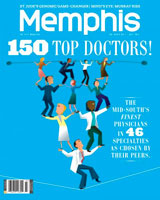Brace-free rehabilitation now possible in knee reconstruction
Traditionally, major knee ligament injuries have been career ending for most professional athletes as well as severely debilitating for non athletes interested in an active lifestyle. Surgeries were often very invasive and required many days of hospitalization followed by casting and a grueling regimen of physical therapy to rehabilitate the knee.
Frequently, knees were left stiff and early techniques were not very successful in restoring stability to the knee. With the advent of arthroscopic surgery, most knee ligament reconstructions are done with arthroscopic assistance and can be done on an outpatient basis.
The major ligament that is most often injured because in this type of disability is the anterior cruciate ligament of the knees. Injury to this ligament causes pain, instability, and giving way of the knee. This hampers athletic pursuits, and to be a problem for those involved in an active lifestyle such as golf or hiking.
Because repairs are rarely successful, surgeons have had to resort to reconstructing the ligament. This means taking a tendon or ligament from another part of the body and placing it in a position to replace the torn ligament. Once construction has been determined the appropriate for the patient, the surgeon needs to determine the type of technique for reconstructing the ligament.
Until recently, the majority of patients that have been treated with ligament reconstruction had been protected in a brace, post operatively and during the rehabilitative period; because of concerns primarily of fixation of the graft while knitting occurs.
Dr. Stephen Howell, in Sacramento California has developed a new technique. He has done extensive study in the laboratory as well as clinical applications developing instruments, which allow accurate reproduction of positioning of new cruciate ligament based on each patient's individual anatomy. Additionally he has developed a new technique of fixation using the semitendonitis, which inherently has superior strength.
The benefits of this are quite clear concerning rehabilitation. Using this technique, the routine is to have the patient bear weight immediately the day of surgery and begin active range of motion of their knee. If the demands of work and family keep the patient from normal scheduled physical therapy, most patients can be instructed to do their exercises at home or even while traveling on business. This can be done using instructions from the physical therapist, a bicycle, pool, or exercise equipment at a health club. Again, all this is done without a brace.
This new technique avoids the complications of tenderness or fracture of the kneecap. Dr. Larry Schrader, MD, of Memphis, Tennessee has studied with Dr. Howell and work with him in the operating room to master this technique.
According to Dr. Schrader, "I have found this procedure to be very reproducible and well tolerated by my patients. Rapid and brace-free rehabilitation is preferable for patience well-being as well as towards a more rapid rehabilitation overall.
This technique is greatly appreciated by both athletes and working people who need to minimize their time off work. I recommend surgery for any of my patients who have complained of pain or instability due to anterior cruciate ligament injuries limiting their ability to participate in sports or other recreational activities, as well as simply an unstable knee with the normal activities of life. "
To schedule an evaluation with Dr. Schrader, call Mid-South Orthopedic Associates at 901-465-4300 or 877-710-5633.
Contact Us

Schrader Orthopedics &
Stem Cell Treatment Center
927 Cordova Station Ave
Cordova, TN 38018
Ph: 901-465-4300
New! Stem Cell Therapy
Dr. Lawrence Schrader is a participating team member of the California Stem Cell Treatment Center and Cell Surgery Network.
California Stem Cell Treatment Center
and Cell Surgery Network







